Project 945 Barrakuda (NATO SIERRA I)
Project 945A Kondor (NATO SIERRA II)

 Nuclear attack submarines: 5 planned, 4 completed 1979-1992, partly active.
Nuclear attack submarines: 5 planned, 4 completed 1979-1992, partly active.
Soviet Cold War Subs
Pr.613 Whiskey | Pr.611 Zulu | Pr.615 Quebec | Pr.633 Romeo | Pr.651 Juliet | Pr.641 Foxtrot | Pr.641 buki Tango | Pr.877 KiloPr.627 kit November | Pr.659 Echo I | Pr.675 Echo II | Pr.671 Victor I | Pr.671RT Victor II | Pr.671RTMK Victor III | Pr.670/670M skat Charlie | Pr.705 lira Alfa | Pr.949 antey Oscar | Pr.945 Sierra | Pr.971 bars Akula | Pr.885 graney Yasen | Pr. 545 Laika
Pr.629 Golf | Pr.658 Hotel | Pr.667A Yankee | Pr.667B Murena Delta I | Pr.667D Delta II | Pr.667BDR Kalmar Delta III | Pr.667 BDMR delfin Delta IV | Pr. 941 akula Typhoon | Pr.995 borei Dolgorukiy | Pr.09851 Khabarovsk
On this last leg on our long trip on Cold War soviet submarines ending this year, are submarines currently in service. These are 3rd generation soviet SSNs, and arguably among the best overall, even compared to the Victor III in many aspects. For the first time, US and British sonars operators had a much harder work finding these, as the culmination of three decades of experience with SSNs. The Sierra class or Project 945 Barrakuda were designed by Lazurit as a reinterpretation of the late 1960s revolutionary Alfa class and also sported a titanium hull, but with a standard nuclear reactor. Due to their great cost, only four were made (for five planned). Two on the basic designed and two in the Project 945A Kondor, then a single Project 945AB, cancelled while under construction with the fall of USSR. The status today are two in reserve, two listed active in the Russian Federal Navy, all in the Northern Fleet. https://naval-encyclopedia.com/cold-war/ussr/sierra-class-submarine.php #ussr #coldwar #sierraclass #nuclearsubmarine #project945barrakuda #sovietsubmarine
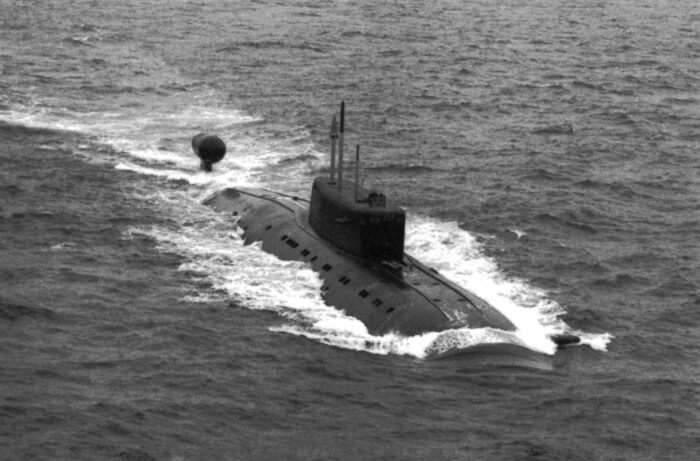
Sierra II underway
Development of the Project 945
The Sierra class were the penultimate nuclear-powered attack submarines designed and built in the Soviet Union before the Akula class. They superficially resembled the Alfa-class, and proceeded from a reboot of the same concept essentially, having a light yet strong titanium pressure hull enabling them to dive to deeper and reduce the level of radiated noise, as well as increasing resistance to torpedo attacks, powered by a new generation a single OK-650 pressurized water reactor, fortunately simpler than the over-complicated and problematic metal-liquid cooled Alfa class reactor. Enormously costly and complicated to manufacture, only four were ever built, with a 5th (potential Sierra III) cancelled during construction.
The upgraded Sierra II class was specifically developed for search and destroy missions against US nuclear submarines, calculated to be quieter and yet faster and more agile, diving deeper than their US counterparts, in particular the Los Angeles class. They also came with an improved quieting and sonar.
The Project 945 program was initiated in March 1972, under the direction of Chief designer N.E. Kvasha, of TsKB-112 Lazurit. They were intended to be the primary Soviet attack submarine and replaced the troublesome Alfa class, also incorporating new sensors, and advanced silencing equipment, brand new command systems and countermeasures. They were based on this design and all the experience gained with the Project 685 Plavnik but with a much larger torpedo room inserted, with capacity of up to 40 torpedoes. Noise levels were also greatly reduced by Cluster Guard anechoic tiles on the outer hull. They were far less detectable by US sonars.
They were also less automated than the initial Alfa class, as it this was found problematic as well. Furthermore, they used a single OK-650 pressurized water reactor, also to alleviate all the problems of the Alfa class and their metal-cooled reactors which required constant circulation at the same temperature to avoid the reactor to be completely inoperable, and thus, land facilities in perfect working order under constant maintenance and vigilance. With standard PWR, there was no issue, as the reactor could be shut down. This new generation reactor was a success, ported also on Project 971 (Akula) and single Mike class submarine, “Komsomolets”.
The development of Project 945 was originally supposed to be Project 945M in 1976. It differed from Project 945 by the use of a better titanium alloy increased its depth by 200 meters and giving a decisive advantage compared to all NATO models. The reasoning was that no torpedo body was able to withstand pressure below a certain depth. The project passed all approvals but ultimately was rejected in favour of the new Project 945A, a solution to have a better performing sub while not risking a rand new hull with a still untested new alloy.
The focus instead was to take extra measures to reduce noise. Notable due to the rafting, this led to increase dimensions for new shock-absorbing and vibration-absorbing systems and solutions. The Project 945A was still challenging to design still, due to strict restrictions on its displacement to be transported by inland waterways. The new bow antenna for the MGK-540 Skat-3 hydroacoustic system instead of the MGK-503 Skat-KS needed also all the bow compartments and the 650 mm torpedo tubes were simply removed altogether. Project 945A also lost a second diesel generator and “grew” by 400 tons displacement. The result confirmed all required design characteristics in testing.
Design of the class
Hull and general design
The Sierra class were given a light and strong titanium pressure hull to reach greater depths below 550 meters (1800 feet) if needed, enhancing survivability against surface weapons, and the typical US Mk 48 324 mm torpedo, as it was believed the small torpedo body will not withhold a pressure beyond 900 ft. The double-hull design has an elliptical end at the bow, a spindle-shaped end at the stern. Cylindrical pressure hull, conical at both ends. Titanium alloy 480T3V developed specifically for their construction, much easier to work with than the previous T-17 alloy, easier to weld and more resistant to cracking.
The titanium hull also had another advantage, having a low magnetic signature, as MAD was the standard detection mode for the USN at the time. They were able to engaged US task force thanks to their large 650 mm tubes and cruise missiles as well as on critical US or NATO coastal facilities. In 1985, they represented the absolute apex of Soviet attack submarine design.
The Project 945 were very comparable in performance to the early Los Angeles class, but they were judged superior to for their non-acoustic detection (thanks to Titanium) and integrated very advanced acoustic countermeasure system. The six 533 mm torpedo tubes enable the use of a large range of weapons, Granat cruise missiles, torpedoes, antisubmarine missiles and mines. The titanium alloy was the same as for the Alfa but the construction process was leaner, more secure and overall much improved.
The Sierra-I class had six major compartments on two levels:
1: Torpedo room, and battery
2: Crew quarters, officers mess and galley
3: Command center, computer, diesel generators
4: reactor
5: Main switchboard, pumps and geared turbines
6: Electric motors, steering gear and pumps.
The double-hull, with a 16.7m diameter outer hull and 12.3m pressure hull reduced possible damage on the inner hull and the outer hull was coated with anti-hydroacoustic bricks greatly absorbing sonar pings. This made that more difficult to detect. It was also one of the first with a new type of crew escape chamber available for the entire crew, from a depth of 1,500 meters.
Powerplant
The main power plant, an OK-650A water-cooled reactor with a capacity of 43,000 hp and one turbo-gear unit. It has four steam generators, two circulation pumps for the first and fourth circuits, three pumps for the third circuit. The boat has two AC turbogenerators, two feed pumps and two condenser pumps. There are also two groups of batteries and two reversible converters.
The whole power plant is rafted. Performances are less than the Alfa class due to the compromises taken, but is a return to the blazing speed of the 1st gen. November class in the 1960 up to 35 knots or more, classified. Surface speed, based on 50,000 hp, is less stellar but unimportant.
Armament
The Sierra I are armed with a torpedo-missile system upon a double standard torpedo tubes, including four 533-mm and two 650-mm torpedo tubes for a supply of 40 torpedoes and missiles.
Conventional torpedoes of various types, but also the Vodopad PLRK missile-torpedoes, and Veter anti-submarine missiles with the ability to install a nuclear warhead can be used as ammunition for torpedo tubes.
Torpedo Tubes
Torpedo armament included four (Sierra I) to six (Sierra II) bow-mounted torpedo tubes, calibre 533 mm (can be fired under 100 m) and two 400 mm TA (under 250 m) with a total of 16 torpedoes in store. Same models as for the Project 659 boats: The main tubes fired the following:
SET-65 torpedoes “Yenot-2” (1965) 533 mm Guided Electrical Torpedo with active acoustic guidance, homing range 880 yards (800 m). 3,836 lbs. (1,740 kg), 307 in (7.800 m), WH 452 lbs. (205 kg), RA 17,500 yards (16,000 m)/40 knots, Silver-zinc battery.
SET 53-61 “Alligator”: (1961) 533mm Acoustic wake following homing torpedo. WH 672 lbs. (305 kg) RA 16,400 yds (15,000 m)/55 kts or 24,000/35, Pw Kerosene-Hydrogen Peroxide Turbine. Replaced by the 53-61M early on (1970s) which had a homing system.
Potentially also:
MGT-1 400 mm Passive acoustic homing torpedo (1961): 1,124 lbs. (510 kg), 177 in (4,500 m) WH 176 lbs. (80 kg), RA 6,600 yards/28 kts, Silver-zinc battery.
First light-weight torpedo designed to provide submarines with a cheap self-defence weapons against other US subs. Service was short, however.
The torpedo armament also included four 650 mm (26 in) torpedo tubes, only on the Sierra I. They could be used to fire super-heavy torpedoes or three types of encapsulated missiles.
SS-N-21 Sampson SLCM
SLCM, cruise missile launched by the 650 mm tubes. Army name RK-55 Relief, NATO reporting name SSC-X-4 ‘Slingshot’ for the land-based variant, and S-10 Granat (NATO SS-N-21 ‘Sampson’) for the naval version. Optional nuclear warhead, usable to destroy a US carrier battle group. Development started well before the Sierra were built, in 1975 by Novator, NPP Temp, Raduga MKB, KhAZ (Kharkiv), produced from 1976 and entering service from 1984. Fitted on all the subs sporting these 650mm tubes, namely the Akula class, Sierra I and Victor III, Yasen-class more recently.
Mass 1,700 kg (3,750 lb), 809 cm (26 ft 7 in) x 51 cm (20.1 in) for a Wingspan of 310 cm (122 in).
The Warhead is either Conventional or Nuclear, with a blast yield of 200kt.
Engine: Solid-propellant rocket booster + R-95-300 or 36MT-37 turbofan 450 kgf for 720 km/h (447.4 mph) and 3,000 km (1,600 nmi), sea-skimming.
It is guided by the Sprut inertial and TERCOM.
RPK-2 Vyuga (SS-N-15 Starfish)
ASW weapon Analogous to the SUBROC, with a thermonuclear 5-200 kt setup depth charge or torpedo.
Launched from the 533 mm torpedo tubes, boosted by a solid fuel rocket and flying op to 45 kilometres (28 mi) away with a payload ranging from the simple depth charge to a 200 kt nuclear depth bomb. In alternative to the Type 40 it carries now the 82R torpedo or 90R nuclear depth charge.
There is also a 650 mm version, like used also by the Sierra.
They are shared by the Akula, Oscar, Typhoon, Delta, Kilo, and Borei classes and Sierra I/II.
Warhead: 2445 kg, warhead or Type 40 torpedo (90 kg HE)
Propellant: solid fuel rocket, range 35–45 km (22–28 mi) at Mach 0.9
Inertial guidance.
RPK-6 Vodopad (SS-N-16 Stallion)
The RPK-6 Vodopad (“waterfall”) is a 533 mm launched anti-submarine missile deployed operationally since 1981.
The 533 mm variant was carried, URPK-6 Vodopad-PL SSM/ASuM (83R, 84R).
There is a 650 mm variant called the RPK-7 Veter (“wind”) operational from 1984. Bot under the same SSN-16 Stallion NATO name.
It seems the URPK-7 Veter SSM/ASuM (86R, 88R) was carried by this class. Up to twelve could be carried.
The range of approximately 100 kilometers. A clear improvement over the RPK-2 Vyuga.
It can carry a Nuclear depth charge or 400 mm torpedo.
Other weapons
-VA-111 Shkval rocket torpedoes
-Strela-3 SAM (9M36), 12 in store, for close-in defence, surfaced.
-On the Sierra 2 it is replaced by an 9M39 Igla SAM.
-There was also a minelaying configuration in which the torpedoes were landed and 42 mines were carried instead.
Modernizations:
-In 2003 B-276 Kostroma was fitted with the new MNK-100 Kolos wake detector.
-In 2015 B-336 Pskov was modified to carry the Kalibr-PL CruM (3M14K)/Kalibr-PL SSM (3M54K)
-In 2018, B-534 Nizhniny Novgorod was modified to carry the Kalibr-PL CruM (3M14K)/Kalibr-PL SSM (3M54K)
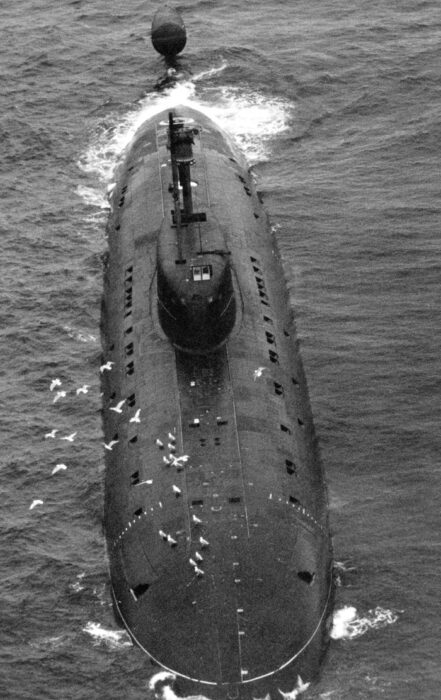
Sensors
The boats of the project were equipped with the MGK-503 Skat sonar. Due to the reduction of the sonar system’s own interference and the boat’s noise level, which was significantly lower compared to the boats of the previous generation, the target detection range increased more than twofold. The number of errors in determining the location of the boat was reduced, which allowed for much less frequent surfacing to determine coordinates. New communication equipment allowed for an increase in the range of signal reception and their depth.
Both 3001 and 3002 (Sierra I) had the same suite:
-MRKP-58 Radian radar
-MGK-500 Skat-KS sonar suite
-MG-519M Arfa-M
-MG-512 Vint-M sonars
-MRP-21 ECM suite
-MG-74 Korund-2 decoys
-MVU-132 Omnibus-5 CCS
The Sierra II was essentially the same but with the following:
-MGK-540 Skat-3 sonar suite
-MNK-200 wake detector
-MRP-23 ECM suite.
3004: The main difference was a MRKP-59 Radian-U radar.
Variants
Project 945 Barrakuda Sierra I

Profile by mike1979russia, CC
The first, Carp, was laid down in July 1979 at Gorky shipyard, launched in August 1983, transferred to Severodvinsk for fitting out and laid up in 1997 but reactivated since after modernization. The next hull was built was Kostroma, launched in July 1986 and commissioned in September 1987. K-276 Kostroma ended in drydock after her collision with USS Baton Rouge she trailed from a bit too close, on 11 February 1992 while in the Barents Sea, off Kildin Island. Fully repaired on 3 June 1992 she was renamed Krab on 6 April 1993. In 1996 she was however renamed Kostroma. They were fitted with a releasable escape pod for the crew following the experience with Kursk. This pod is covered by a V-shaped casing, located on the port side of the sail.
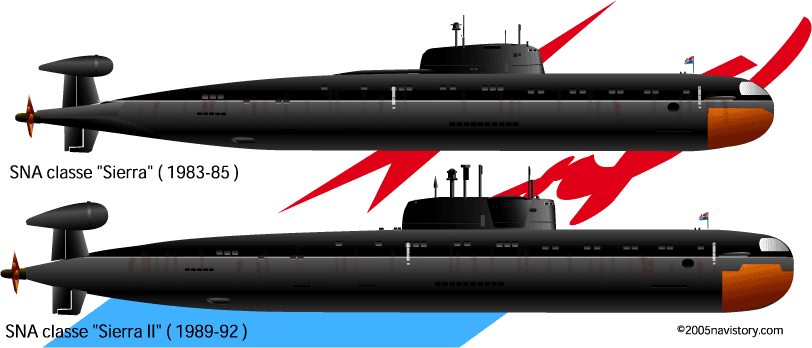
Author’s illustrations; comparison between the Sierra I and II.
⚙ Sierra Pr.945 specifications |
|
| Displacement | 6,170t surfaced, 8,200t underwater |
| Dimensions | 107.2m x 12.3 pressure hull/16.7 outer hull x 9.62m |
| Propulsion | OK-9D geared steam turbines, OK-650B-3 nuclear reactor 50,000 hp |
| Speed | 12.2 kts surfaced, 35 kts underwater |
| Range | Unlimited (less food) |
| Armament | 4x 650mm TT (12), 4x 533mm TT (28), 9M36 Strela-3 SAM (12) |
| Sensors | MRKP-58 Radian radar, MGK-500 Skat-KS sonar, MG-519M Arfa-M, MG-512 Vint-M sonars, MRP-21 ECM, MG-74 Korund-2 decoys, MVU-132 Omnibus-5 CCS |
| Test depth | 480m (1,575 ft) |
| Crew | 61 |
Project 945A Kondor Sierra II
Project 945A were elongated, with a new and reworked sail 5 m (16.4 ft) longer than for the Sierra I class. The sail had a flat and square leading edge and its masts are offset on the starboard side to included two escape pods, both in the sail. The starboard side is also given a 10-point environment sensor, fitted at right angles, to the front end of the sail. There is also a much larger pod on the aft fin for the new Skat 3 passive very low frequency towed sonar array.
Pskov was in overhaul between 2011 and 2015 (src Deep storm) and Nizhniy Novgorod was active under command of Captain 1st Rank Alexey Ananko in 2008 and 2013.
Nizhny Novgorod and Pskov were seen in a large naval exercise by October 2019. See careers for their 2025 status.
The Sierra-II or Project 945A were longer of five meters and had an improved sonar capability with a further reduced acoustic signature, larger sail of six meters accommodating two rescue chambers, versus a single chamber on the Sierra-I. They had improved living quarters and a better rafting for their reactor and electric drive as well. They were the first equipped with a US style spherical bow sonar, a true revolution in Soviet submarine design. The torpedo tubes were thus relocated farther aft, angled out from the centreline exactly like US subs. This solution was also retained for the Akula class and all soviet subs since.
The torpedo room was also modified to accommodate the new S-10 Granat strategic cruise missile and the greater length made for a seventh compartment with in order, the torpedo room and battery, crew quarters, officers mess and galley, sonar room and command centre, computer and diesel generators, reactor, main switchboard, pumps and geared turbines, electric motors, steering gear and pumps. There were also many other differences in the outer hull.
⚙ Sierra Pr.945 specifications |
|
| Displacement | 6,466t standard, 8,500t submerged |
| Dimensions | 110.6 x 12.3 pressure hull/16.7 outer hull x 9.50m |
| Propulsion | 1 shaft OK-9D steam turbines, OK-650M.01 nuclear reactor 50,000 hp |
| Speed | 14 kts surfaced, 32.8 kts underwater |
| Range | Unlimited (less food) |
| Armament | 6x 533 TT (36) see notes. 1x Igla SAM (12) 9M39 |
| Sensors | MRKP-58 Radian, MGK-540 Skat-3 sonar, MG-519 Arfa, MG-512 Vint-M, MNK-200, MRP-23 ECM, MG-74 Korund-2 decoys, MVU-132 Omnibus-5 CCS |
| Test depth | 480m (1,575 ft) |
| Crew | 65 |
Project 945AB Sierra III

Profile by mike1979russia, CC
A single submarine of that Project 945AB was laid down in March 1990 but scrapped in November 1993, before completion. Notably because the Akula class development line was more promising.
The Sierra class: Career
 B-239 Carp
B-239 Carp

B-239 Carp was laid down on 20 July 1979, launched on 29 July 1983 and completed on 29 September 1984. She was decommissioned on 30 May 1998. In 2013, she was prepared for an overhaul and modernization to the level of 4th generation submarines at Zvezdochka Shipyard. But on 16 May 2014, fuel was unloaded from a reactor close change. According to a 7 June 2014 memo, she was still prepared for unloading spent nuclear fuel but by March 2015, her overhaul was suspended until further notice (reactor out and secured) and as of 2020, all modernization work was stopped, and she was sent to the long term reserve.
 B-276 Kostroma
B-276 Kostroma
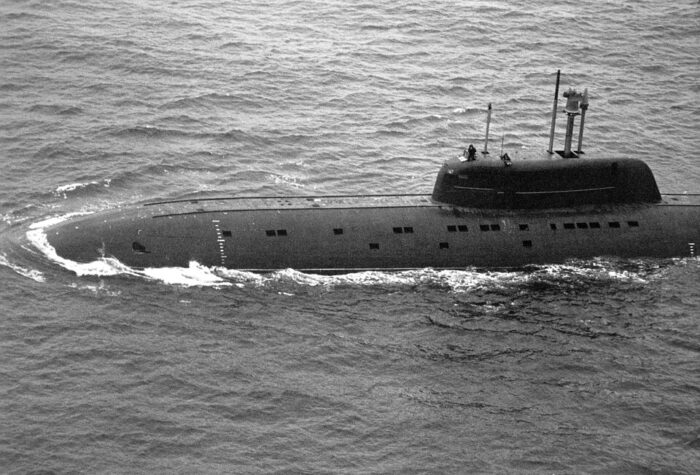
B-276 Kostroma was laid down on 21 April 1984, launched on 26 July 1986 and completed, fitted out after transfer on 27 November 1987. Her later years were about the same, she remained part of the Northern Fleet until it was planned her major refit and modernization programmed to take place after the one of her sister “Karp”. But as of 2020, this was postponed, and she had been placed in long term reserve as well.
 B-534 Nizhniy Novgorod
B-534 Nizhniy Novgorod
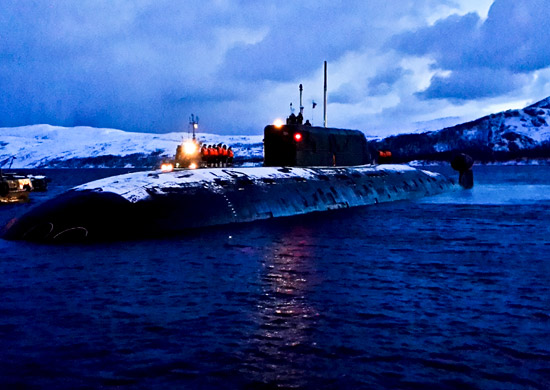
B-534 Nizhniy Novgorod was the lead boat of the Project 945A sub-class, laid down on 15 February 1986, launched on 8 July 1989 and completed on 26 December 1990. The crew was trained from 1984 May 7 by the commander of the 6th submarine brigade of the 1st submarine flotilla, northern fleet.
To be fitted out, she was conveyed on a pontoon dock along the Volga River and the White Sea-Baltic Canal to Krasnoye Sormovo shipyard, Severodvinsk.
On 5-7 June 1990 she made her first sortie and first dive. By October, she made her first missile launch and first torpedo launch on the 9-10th. 10.10 and first mine laying test in December.
She completed soon after her factory sea trials and state tests.
On December 26 her acceptance certificate was signed and on January 11, 1991 joined her permanent base in Zapadnaya Litsa Bay.
Until May and systems were setup ay Nerpa shipyard in Vyuzhny. On March 14, 1991 she was assigned to the 6th Submarine Division, 1st Submarine Fleet, Northern Fleet in Zapadnaya Litsa.
In June 1991 the crew started training for the first long range deployment. She was transferred to the 9th Brigade at Vidyaevo and until August, performed acoustic tests in the White Sea. On 3 June 1992 she was renamed B-534 and until September was prepared for a Northern Fleet search operation in the North Atlantic. On 6 April 1993 she was renamed “Zubatka” and made a first deployment until October 1994. In December, she watched over state trials of the K-141 (project 949A) OSCAR in the White Sea.
On March 23, 1995, she was renamed Nizhny Novgorod and on March 27, 1997 blessed by Father Vladimir.
The same year, she tracked NATO submarines in the Norwegian and Greenland Seas. She also took part of the Northern Fleet’s tactical exercise with an “excellent” rating. She was later visited by a delegation from the Nizhny Novgorod Region. Logs unknown for 1998-2000
In December 2000 she is decommissioned after an emergency in the reactor compartment and in January 2002, transferred to SRZ Nerpa, Kut Bay in nezhnogorsk (Murmansk Region) for refit and replacement of the reactor core. Budget cuts slowed down the process, and it was no excluded she would be decommissioned.
Measures were taken to reduce the radiation activity of the coolant of the primary circuit of the reactor. Her refit was urged by the Governor of the Nizhny Novgorod Oblast, Gennady Khodyrev to President Vladimir Putin as CiC of the Russian Navy, and of the Atomic Energy minister to allocate funds to complete the refit of the submarine
It was resumed in 2005 with three years of preparation.
 B-336 Pskov
B-336 Pskov
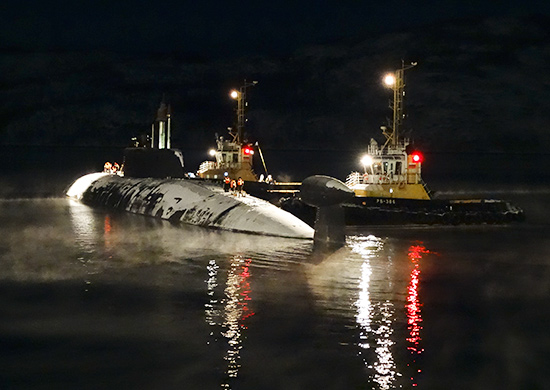
B-336 Pskov was the second Sierra II, laid down on 29 June 1989, launched on 28 July 1992, completed on 17 December 1993. She was assigned to the Northern Fleet. In 1991 June 20, she was pre-assigned to the 6th Submarine Division, reformed into the 9th squadron from 1994 at Vidyaevsky.
10 October 1993 saw acceptance for the first line and by August 11, 1994, her crew completed training at the 270th Naval Training Center in Sosnovy Bor. She was sent to the 7th Submarine Division, 1st Submarine Fleet, Northern Fleet and in March 1996 took part in the Northern Fleet command and staff exercise. On September 2001 an agreement is accepted to work with the Kaduysky District of the Vologda Oblast, with the crew nicknaming her “Kaduy”. No logs. In 2002 crew complete training at the 270th Naval Training Center in Sosnovy Bor and in 2001 she is awarded the prize of the best Northern Fleet sub. In 2016, she is still listed in the 7th Submarine Division, Northern Fleet, but her current status after 2020 requires clarification.
Read More/Src
Books
Darman, Peter, ed. (2004). 21 Century Submarines and Warships. Military Handbooks. Grange Books.
Gardiner, Robert; Chumbley, Stephen; Budzbon, Przemysław, eds. (1995). Conway’s All the World’s Fighting Ships 1947–1995.
Breemer, Jan S. (1989). Soviet Submarines: Design, Development and Tactics. Coulsdon, Surrey: Jane’s Information Group.
Miller, David; Jordan, John (1987). Modern Submarine Warfare. New York: Military Press.
Miller, David (1989). Modern Submarines. Combat Arms. New York: Prentice Hall Press.
Polmar, Norman; Moore, Kenneth J. (2004). Cold War Submarines: The Design and Construction of U.S. and Soviet Submarines. Potomac Books.
Polmar, Norman; Noot, Jurrien S. (1991). Submarines of the Russian and Soviet Navies, 1718-1990. NIP
Hutchinson, Robert (2005). Jane’s Submarines : War Beneath The Waves from 1776 to the Present Day (1st U.S. ed.). New York: Collins.
Links
deepstorm.ru/
forbes.com hisutton/ russian-submarines to test new weapons off norway
DeepStorm.files K-524
.deepstorm.ru/ K284
hisutton.com SIERRA-II.html
web.archive.org rosprom.gov.ru/
navypedia.org/s ss_k239.htm
navypedia.org/ ru_ss k534.
globalsecurity.org/ 945.htm
russianships.info/ project_945.htm
web.archive.or /svpressa.ru/
ship.bsu.by/main.asp
vz.ru/news/
web.archive.org bastion-karpenko.ru
severpost.ru/
deepstorm.ru/ 945/list.htm
deepstorm.ru/ 945A/list.htm
flotprom.ru/news/
ru.wikipedia.org/wiki/
atomic-energy.ru/
web.archive.org ruspodlodka.narod.ru/
flotprom.ru/news
https://flotprom.ru/2015
ru.wikipedia.org/
nationalinterest.org Russia’s Sierra-Class II Titanium Submarines Are a Giant Mystery
Videos
Model Kits
on Scalemates.com/
A well covered subject in 1:700 and 1:350.

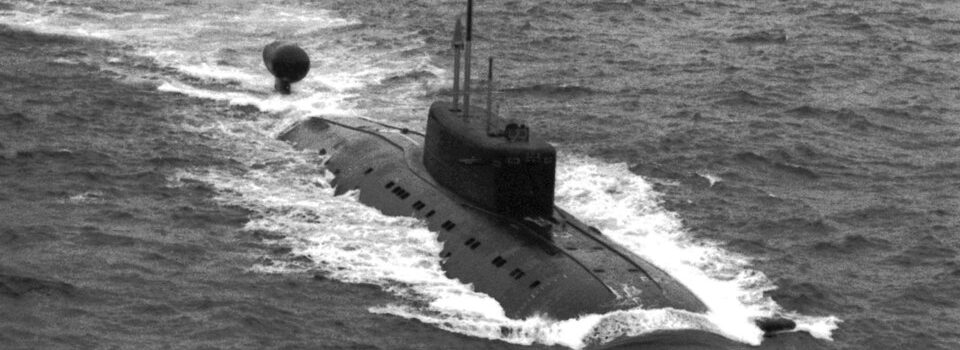
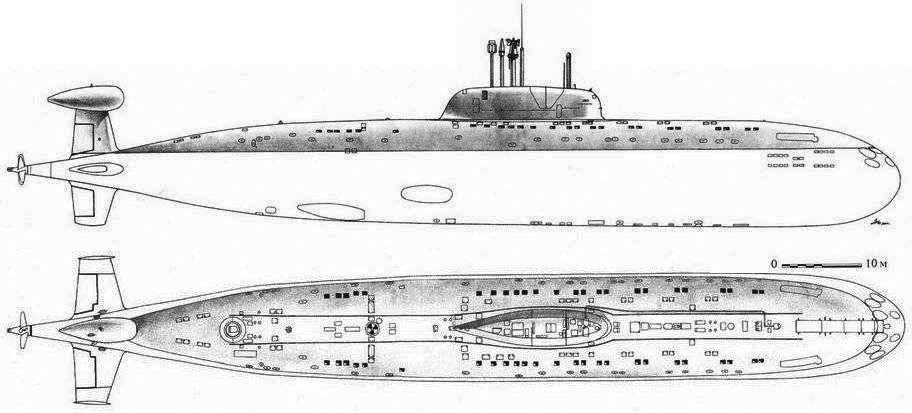

 Latest Facebook Entry -
Latest Facebook Entry -  X(Tweeter) Naval Encyclopedia's deck archive
X(Tweeter) Naval Encyclopedia's deck archive Instagram (@navalencyc)
Instagram (@navalencyc)





 French Navy
French Navy Royal Navy
Royal Navy Russian Navy
Russian Navy Armada Espanola
Armada Espanola Austrian Navy
Austrian Navy K.u.K. Kriegsmarine
K.u.K. Kriegsmarine Dansk Marine
Dansk Marine Nautiko Hellenon
Nautiko Hellenon Koninklije Marine 1870
Koninklije Marine 1870 Marinha do Brasil
Marinha do Brasil Osmanlı Donanması
Osmanlı Donanması Marina Do Peru
Marina Do Peru Marinha do Portugal
Marinha do Portugal Regia Marina 1870
Regia Marina 1870 Nihhon Kaigun 1870
Nihhon Kaigun 1870 Preußische Marine 1870
Preußische Marine 1870 Russkiy Flot 1870
Russkiy Flot 1870 Svenska marinen
Svenska marinen Søværnet
Søværnet Union Navy
Union Navy Confederate Navy
Confederate Navy Armada de Argentina
Armada de Argentina Imperial Chinese Navy
Imperial Chinese Navy Marinha do Portugal
Marinha do Portugal Mexico
Mexico Kaiserliche Marine
Kaiserliche Marine 1898 US Navy
1898 US Navy Sovietskiy Flot
Sovietskiy Flot Royal Canadian Navy
Royal Canadian Navy Royal Australian Navy
Royal Australian Navy RNZN Fleet
RNZN Fleet Chinese Navy 1937
Chinese Navy 1937 Kriegsmarine
Kriegsmarine Chilean Navy
Chilean Navy Danish Navy
Danish Navy Finnish Navy
Finnish Navy Hellenic Navy
Hellenic Navy Polish Navy
Polish Navy Romanian Navy
Romanian Navy Turkish Navy
Turkish Navy Royal Yugoslav Navy
Royal Yugoslav Navy Royal Thai Navy
Royal Thai Navy Minor Navies
Minor Navies Albania
Albania Austria
Austria Belgium
Belgium Columbia
Columbia Costa Rica
Costa Rica Cuba
Cuba Czechoslovakia
Czechoslovakia Dominican Republic
Dominican Republic Haiti
Haiti Hungary
Hungary Honduras
Honduras Estonia
Estonia Iceland
Iceland Eire
Eire Equador
Equador Iran
Iran Iraq
Iraq Latvia
Latvia Liberia
Liberia Lithuania
Lithuania Mandchukuo
Mandchukuo Morocco
Morocco Nicaragua
Nicaragua Persia
Persia San Salvador
San Salvador Sarawak
Sarawak Uruguay
Uruguay Venezuela
Venezuela Zanzibar
Zanzibar Warsaw Pact Navies
Warsaw Pact Navies Bulgaria
Bulgaria Hungary
Hungary

 Bundesmarine
Bundesmarine Dutch Navy
Dutch Navy Hellenic Navy
Hellenic Navy Marina Militare
Marina Militare Yugoslav Navy
Yugoslav Navy Chinese Navy
Chinese Navy Indian Navy
Indian Navy Indonesian Navy
Indonesian Navy JMSDF
JMSDF North Korean Navy
North Korean Navy Pakistani Navy
Pakistani Navy Philippines Navy
Philippines Navy ROKN
ROKN Rep. of Singapore Navy
Rep. of Singapore Navy Taiwanese Navy
Taiwanese Navy IDF Navy
IDF Navy Saudi Navy
Saudi Navy Royal New Zealand Navy
Royal New Zealand Navy Egyptian Navy
Egyptian Navy South African Navy
South African Navy






























 Ukrainian Navy
Ukrainian Navy dbodesign
dbodesign